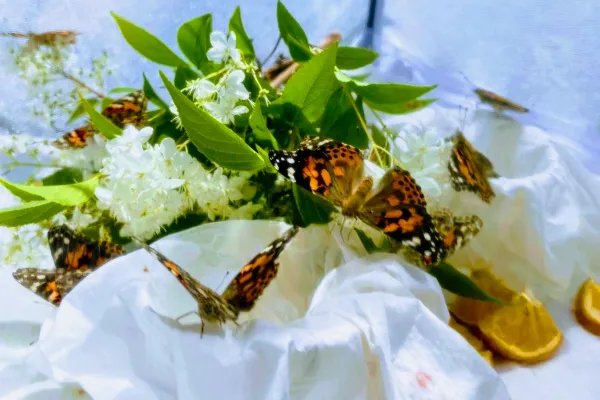On the afternoon of Friday, June 21st, we will celebrate our Senior Kindergarten students at their graduation ceremony. They have grown and changed so much this year and experienced many milestones. They learned to read books and write in cursive, lost their first teeth, made new friends, learned addition and subtraction, and so much more. As I watched them talk about their new backpacks and uniforms for grade 1, I was amazed at how easy it was for them to let go and be ready to move on to Grade 1! One student said, “It’s okay to say goodbye because we will see each other again soon, just like how I saw ‘my butterfly’ on the playground!”
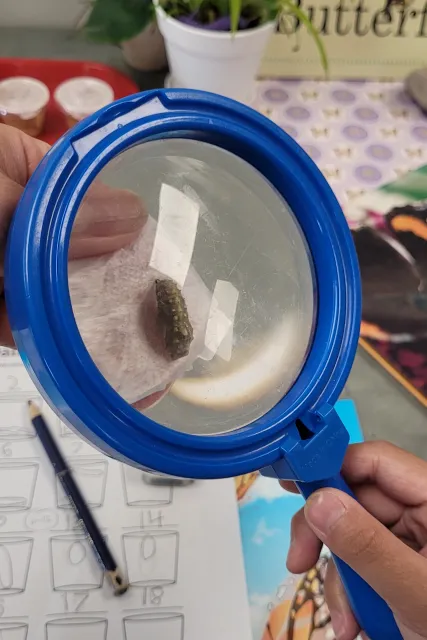


Last month, we had some very special visitors in our class – Suzie, Timothy, Lydo, Fluffy, Sweetie, Crispy, Flash, Cupcake Lavender, Pinky Violet, Starbucks, Rainbow Cookie, Speedy Carson, Quicksilver, Truckman Candy and Lightning Bolt. These were our Painted Lady Butterflies. Our SK students creatively named their caterpillars! They arrived as eggs and some as tiny caterpillars, and we got to experience their metamorphosis into beautiful butterflies.
The life cycle of a butterfly is truly unique. Butterflies have four life stages: the egg, the larva (caterpillar), the pupa (chrysalis), and the adult butterfly. Each of the four stages is unique to individual species of butterflies, which is part of what makes watching and raising butterflies so much fun.
After about 3-5 days, tiny caterpillars hatch from their eggs. Most of the caterpillars ate their eggshells as their first meal. One student described our caterpillars as “hungry monsters” because they just kept eating as they grew bigger and bigger. They even ate the paper towel under their container lid!
For about 8-14 days, our painted lady caterpillars kept eating and growing as they prepared themselves for pupation. Some of the students were able to witness how one caterpillar created its silk button and hung itself upside down in a J form under a paper towel!!
Once the brown chrysalises were formed, we transferred them into their habitat cage. They remained on that stage for about 7-10 days. Every day, our SK students checked on them when they arrived in the classroom. As the days passed by, most of them were worried if they were still alive as they were not moving. One afternoon, three students were observing the chrysalises when suddenly, a few moved in a circular motion while still attached to a silk button. The students exclaimed that they were dancing, so we called it the “J-dance”! They learned that they do the “dance” to scare off predators from attacking them.
After 7 to 10 days, our butterflies emerged from their chrysalises. The children asked why
their wings seemed small and their abdomens were large. They learned that their abdomens are filled with fluids that will be pumped into their wings over the next few minutes of emergence. They also learned that butterflies expel a red liquid called meconium, the excess fluid not needed for the process.
Our SK students asked a lot of why and how questions, resulting in us learning about pollination and ecosystems! Their ability to ask questions is a powerful tool that allows them to gather information they need in order to learn about the world and solve problems in it.
For about two weeks, the children worked hard on feeding their butterflies with sugar water, fresh flowers and orange slices as they continued to observe their growth. We waited until their wings were dry and strong enough to take their first flight. We released our butterflies on the first nice day that came along with all the SK students.
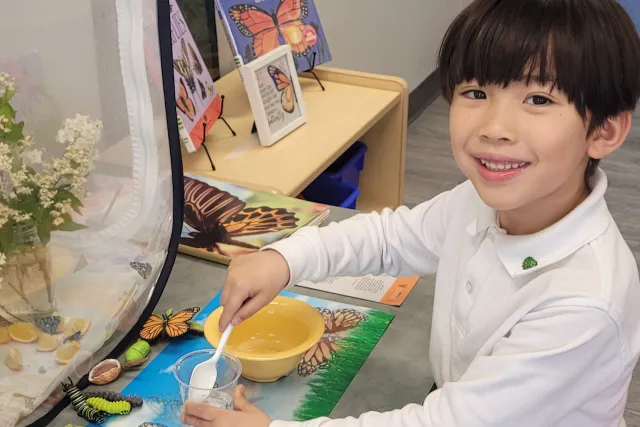

As we departed outside, I watched our students hold onto, chase down, and stare in wonder at their beloved creatures of flight. I mentally started the process of releasing our SK students as they truly are ready to fly away to Grade 1. For several days, we often saw the butterflies in the vicinity of their release.
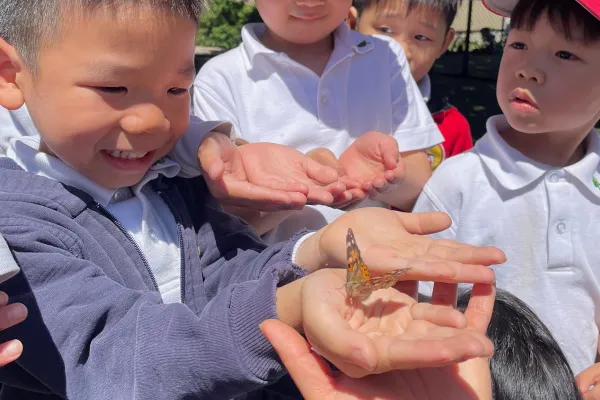
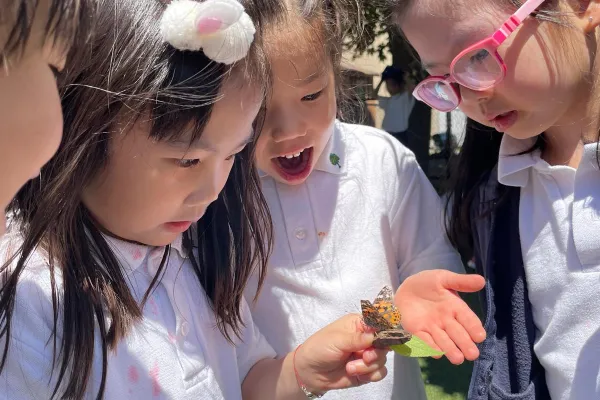
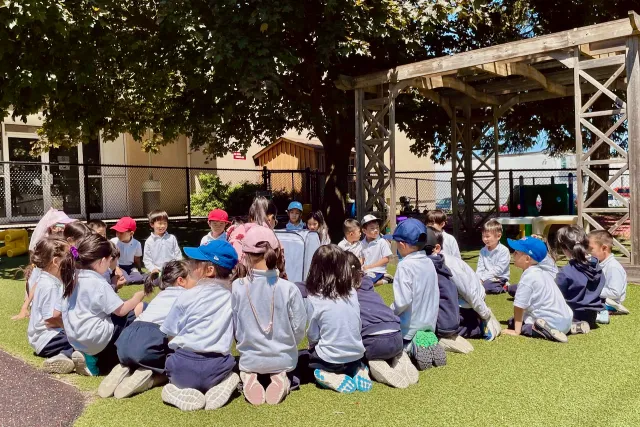
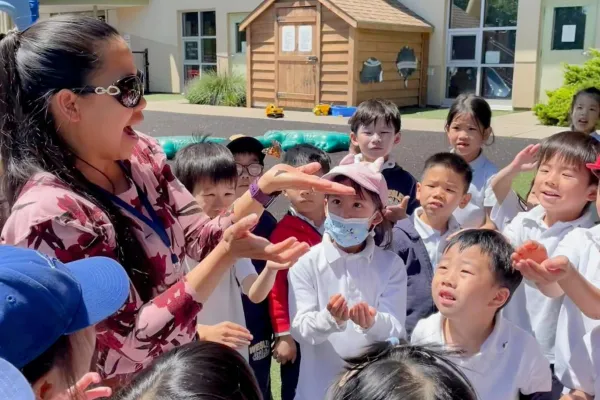
This is one of the most amazing transformations that children or adults can witness. I am in awe of how God made butterflies and other creatures go through metamorphosis. It truly shows God’s amazing workmanship and creativity.
“How countless are your works, LORD!
In wisdom you made them all;
the earth is full of your creatures.”
Psalm 104:24

